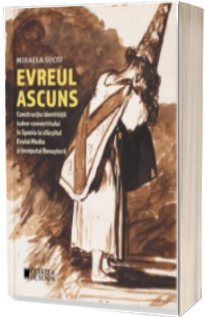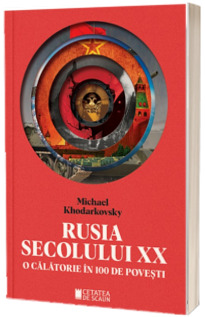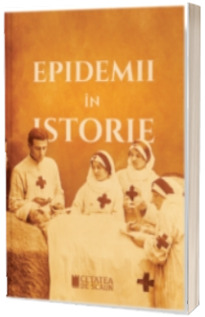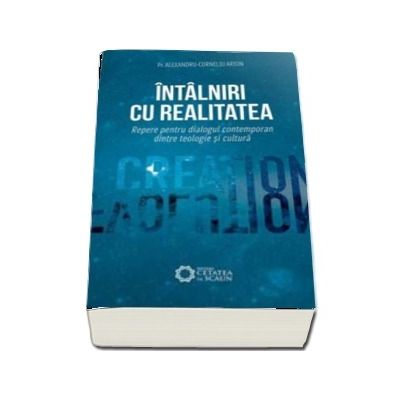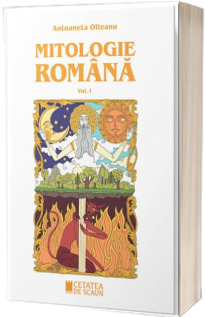Descriere - From hunter gatherer to farmers. Human adaptations at the end of the pleistocene and the first part of the holocene
It is difficult to capture one's life in a few words, a few photographs or even a book. The papers in the present volume will hopefully reflect a part of Clive Bonsall's scientific interests during a career that has started some 45 years ago. Their diversity is impressive: from radiocarbon dating, environmental changes, human-environment interactions, funerary behaviour, to paleogenetics and stable isotopes, reconstruction of ancient diets and obsidian sourcing, most of them in close connection to the hunter-gatherer and first farmer communities of Europe. His studies stretched over a large geographical area, focusing recently mainly around the Balkans and the neighbouring regions. He has conducted fieldwork in Britain, Scotland, Romania and Slovenia, edited 9 books and published over 160 papers, book-chapters, notes, as well as book and paper reviews. His main publications include: "The Mesolithic in Europe” (1989), "The Human Use of Caves” (1997), "The Iron Gates in Prehistory” (2008), "Submerged Prehistory” (2011) and "Not Just for Show: The Archaeology of Beads, Beadwork and Personal Ornaments” (2017).
His substantial work in southeastern Europe is reflected by his long-standing collaboration and friendship with many Romanian and Bulgarian archaeologists, and has received due recognition: Clive Bonsall is an Honorary Member of both the "Vasile Parvan” Institute of Archaeology in Bucharest and the National Institute of Archaeology with Museum in Sofia. His contribution to the archaeology of the Iron Gates has earned him the recognition of the Serbian archaeologists working in the area. His many other research interests and personal collaborations are also reflected in the present volume.
We are grateful to all our contributors: colleagues and friends, new and old, former students and collaborators whose archaeological interests met Clive's if only briefly. We were happy to see that so many of us were able to mobilize in such a short time. We would like to thank all those who answered our call and at a time when every minute of our professional lives is carefully planned in advance, helped us put together this volume in less than a year. They have endured and complied with our constant deadline reminders and requests, checked and re-checked their manuscripts in record times, gracefully complying with the comments and suggestions from the reviewers, and were most patient with our editorial work.
Each paper was submitted to a double reviewing. We would like to also thank our colleagues from various disciplines who accepted to anonymously review the contributions. Their hard and serious work significantly improved the overall content of the volume.
The outcome has exceeded our most optimistic expectation: a volume that geographically covers almost the entire European continent, from Britain to Russia and Greece and touches on most important issues of hunter-gather adaptions through time. A volume brought together by chronological landmarks (the end of the Pleistocene and the beginning of the Holocene) and geographical areas but also by common approaches to issues such as human-animal interactions, exploitation and use of raw materials, and subsistence strategies.
We chose to organize the papers on three main sections, while within the respective theme they follow in chronological succession. The archaeology of the Iron Gates opens the volume, given Clive Bonsall's substantial contribution to the local early prehistory. The eight contributions cover a large range of subjects, from physical anthropology (Andrei Soficaru), re-interpretation of earlier excavations and the subsequent collections (Adina Boroneanț), stone artefacts (Dragana Antonović, Vidan Dimić, Andrej Starović and Dušan Borić) to the study of faunal remains and subsequent paleo-dietary issues (Adrian Bălășescu, Adina Boroneanț and Valentin Radu; Dragana Filipović, Jelena Jovanović and Dragana Rančić; Ivana Živaljević, Vesna Dimitrijević and Sofija Stefanović), and osseous industries (Monica Mărgărit and Adina Boroneanț; Selena Vitezović). These studies illustrate the still immense research potential of the Iron Gates region despite the fact that most of the sites have been flooded many decades ago.
During the editing of the volume it became obvious that while some of the contributions focused on the evidence from a certain site, others were more of a regional synthesis. This latter section begins with a most interesting paper bringing together world history and underwater archaeology (Jonathan Benjamin and Geoff Bailey). The following nine articles deal with subjects such as social inequalities seen through the study of burial practices (Judith M. Grünberg), lifeways, adaptations and subsistence strategies of the early prehistoric communities (Agathe Reingruber; Mihael Budja; Annie Brown and Haskel Greenfield; Kenneth Ritchie), raw materials acquisition and exploitation (Tomasz Płonka, Maria Gurova, Eva David), exploitation, management and trade of "exotic” goods (Vassil Nikolov).
The nine papers focusing on individual sites present case studies that illustrate the nature of the current research, the rich opportunities offered by the growing range of scientific techniques and their applications to existing collections. This series of papers starts at Zemunica Cave on the coast of the Eastern Adriatic (Siniša Radović and Ankica Oros Sršen), explores the Mesolithic occupations at Malga Rondenetto (Paolo Biagi, Elisabetta Starnini and Renato Nisbet) and Grotta dell'Edera (Barbara Voytek) in Italy, the Mesolithic ornamented weapons of Motala in Sweden (Lars Larsson and Fredrik Molin), ending this Mesolithic journey among the shell middens on the western coast of Scotland (Catriona Pickard). The transition to the Neolithic happens among the beaver tools at Zamojste 2 in Russia (Olga Lozovskaya, Charlotte Leduc and Louis Chaix). The Neolithic Age finds us further south into Bulgaria, exploring the pitfields of Sarnevo (Krum Bacvarov and John Gorczyk) and the gold of Varna (Tanya Dzhanfezova), while during the Bronze Age roe deer hunting is resurrected at Paks-Gyapa in Hungary (László Bartosiewicz and Erika Gál).
The volume presents altogether new results in recent research and new information resulted from the study of old collections. We also hope it points out directions for future research.
It is with great joy that we present Clive Bonsall this volume, as a token of both our appreciation and friendship, for his contributions to the Early Prehistory of Europe in general, and of Southeastern Europe in special.
